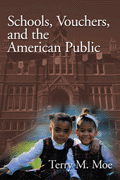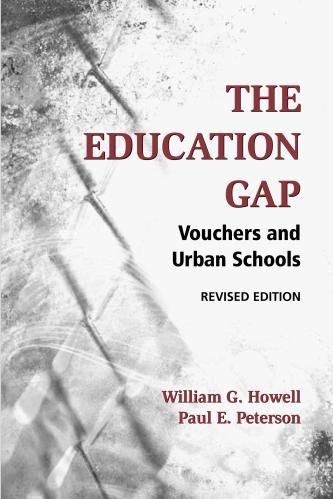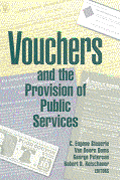Studies in this week’s Hutchins Roundup find targeted housing vouchers improve children’s future earnings, spending more per student boosts educational performance, and more.
Want to receive the Hutchins Roundup as an email? Sign up here to get it in your inbox every Thursday.
Targeting housing vouchers to good neighborhoods boosts future earnings of children
Should policy steer low-income households toward neighborhoods that could improve children’s outcomes? Morris A. Davis from Rutgers and co-authors analyze how location-restricted housing vouchers could affect the adult earnings of children in Los Angeles. They find that a policy that limits the use of vouchers to locations in the top 20% of neighborhoods—as measured by the amount of intergenerational mobility—increases adult earnings of children by roughly $7,400. A voucher program that restricts locations to the top 10% of neighborhoods maximizes aggregate earnings of all children of renting households, including those that did not receive vouchers. Both policies result in large gains in the future earnings of children in households that accept the voucher and small losses for other children; the loss reflects the increase in housing rent in desirable neighborhoods, which causes some families without vouchers to move out. “On net, the gains far outweigh the losses and ultimately housing vouchers appear to have significant potential to improve intergenerational mobility,” the authors conclude.
School spending consistently improves test scores, graduation rates and college-going rates
Comparing over 30 studies of the impact of public school spending on educational outcomes, C. Kirabo Jackson and Claire Mackevicius of Northwestern find that, on average, increasing per-pupil spending by $1000 increases test scores by 0.4 standard deviation, graduation rates by 2.1 percentage points, and college-going rates by 3.9 percentage points, with the greatest effects for low-income students. The impacts on test scores and college-going rates are similar in size to reducing class size by 2.5 and 10.2 students, respectively. Focusing solely on test score outcomes could understate the impact of school spending, the authors say— by benchmarking against other kinds of school interventions (like class size), they find that the relative change in educational attainment compared to test scores is consistently higher for spending interventions. The authors also find that the marginal benefits of an extra $1000 per student do not diminish much for schools with higher baseline funding levels, suggesting that most schools would see educational returns from spending more.
COVID-19 had a negative effect on core inflation
Core inflation, that is inflation excluding volatile food and energy prices, was a low 1.5% for the 12 months ending in December 2020, using the Federal Reserve’s preferred measure, the Personal Consumption Expenditure (PCE) price index. Matteo Luciani from the Fed’s Board of Governors estimates that COVID lowered core PCE price inflation in March, April, and May by 0.5 percentage point. This was primarily driven by services heavily affected by the pandemic, including financial services, apparel, accommodations, and airfares. In contrast, COVID raised core inflation in June and November by about 0.2 and 0.1 percentage point as the economy began to open. Luciani estimates that COVID reduced core inflation in 2020 by 0.2 percentage point through December. As the effects of COVID wane, he expects higher prices for COVID-affected services to boost core inflation.
Chart of the week: With low owner turnover and limited new construction, fewer homes for sale
Quote of the week:
“The COVID shock revealed vulnerabilities in the market for U.S. Treasury securities. The U.S. Treasury market is one of the most important and liquid securities markets in the world, and many companies and investors treat Treasury securities as risk-free assets and expect to be able to sell them quickly to raise money to meet any need for liquidity. Trading conditions deteriorated rapidly in the second week of March as a wide range of investors sought to raise cash by liquidating the Treasury securities they held… The acute stresses in the Treasury market necessitated emergency intervention by the Federal Reserve at an unprecedented scale… These actions rapidly restored market functioning, and a variety of indicators had returned to pre-COVID levels by the summer,” says Lael Brainard, member of the Board of Governors of the Federal Reserve System.
“While the scale and speed of flows associated with the COVID shock are likely pretty far out in the tail of the probability distribution, the crisis highlighted vulnerabilities in the critically important Treasury market. A number of possible reforms have been suggested to strengthen the resilience of the Treasury market. For instance, further improvements in data collection and availability have been recommended to enhance transparency related to market participants, such as broker-dealers and hedge funds. Some have suggested that the Federal Reserve could provide standing facilities to backstop repos in stress conditions… Other possible avenues to explore include the potential for wider access to platforms that promote forms of ‘all to all’ trading less dependent on dealers and, relatedly, greater use of central clearing in Treasury cash markets.”











Commentary
Hutchins Roundup: Housing vouchers, school spending, and more
March 4, 2021